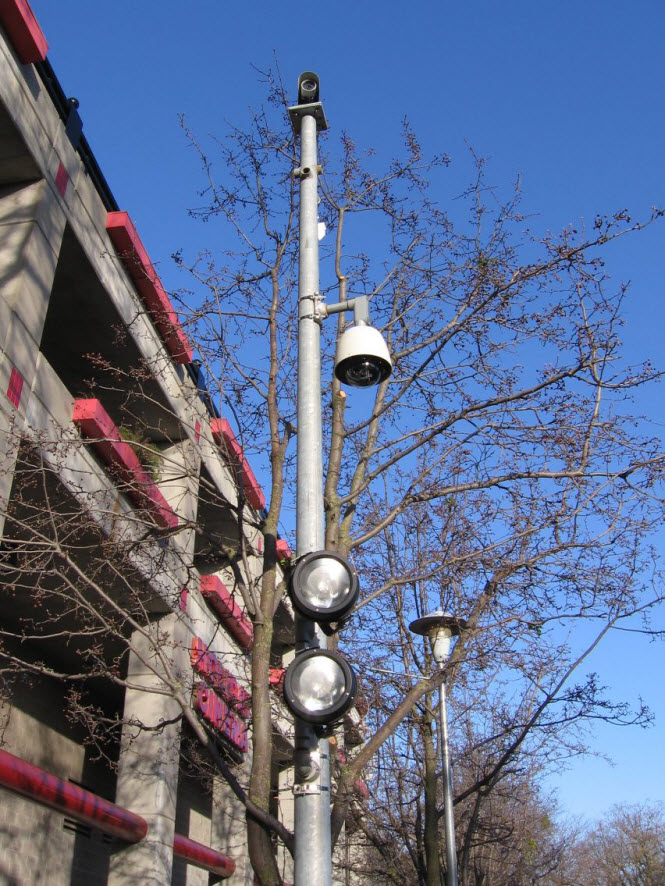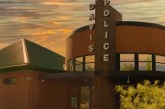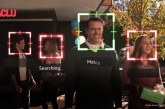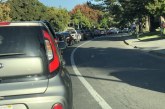 Traffic intersections have proven to be one of the most dangerous locations for drivers. One of the chief problems are vehicles running red lights, trying to race to get through in time.
Traffic intersections have proven to be one of the most dangerous locations for drivers. One of the chief problems are vehicles running red lights, trying to race to get through in time.
In trying to make these intersections, many cities utilized new technology and have installed red light cameras, much as Davis has done so at the intersection of Russell and Sycamore.
Recently, Los Angeles gridlocked over the issue and canceled their program.
The LA Times report, “Only five council members voiced outright support for the cameras, which photograph any vehicle that crosses against the light or turns right without coming to a full stop. They argued that the cameras are an essential part of the city’s public safety arsenal and should be kept even if only a fraction of the city’s residents pay the tickets.”
“People are dying by running red lights, and that’s the primary concern here,” Councilman Richard Alarcon said. “If this program will reduce that number, who cares about the cost?”
According to one report, 29 cities in California have taken steps against red light systems. When Anaheim recently asked its residents for input, 73% of residents believed such systems should be banned.
In Westminster, the city council decided unanimously, recently, to ask voters to decide whether to ban the use of red light cameras, in an election scheduled for November 2012.
Costs are a consideration. There was an expectation that better enforcement would cover the costs. However, a few years ago, the City of Davis found that red light cameras and more stringent parking policies deterred law violators, which sounds good until you realize it also means a loss of revenue for the city.
San Bernadino’s city manager wrote in a memo to their council, “There was an expectation that citation revenue would cover the cost of the program and provide some additional revenue for the city, which never came to fruition. This, coupled with the increased workload the program created for the finance department and the sheriff’s department, is the fiscal reason for not extending the program.”
Civil liberties groups have problems with red light cameras, as well.
The ACLU opposes such cameras, arguing, “Presently, when someone receives a traffic violation, the officer who provides the ticket makes the motorist immediately aware of the violation. With red light or speed cameras, however, it may be days or weeks before a person is given notification of a citation. The longer time duration makes it more difficult to recall details and adversely affects the driver’s ability to challenge the ticket.”
The ACLU expressed other privacy concerns, as well. “While the invasion of privacy occasioned by these systems may seem minor, any implementation of a system that leads to widespread installation of cameras throughout the state cannot be ignored or minimized. As surveillance cameras of any kind become more ubiquitous, a further desensitization of privacy rights is inevitable,” they write.
They add, “Also, camera systems are likely to be abused through mission creep — that the data collected by these cameras will be used for purposes other than tracking reckless drivers. Government and private-industry surveillance techniques created for one purpose are rarely restricted to that purpose, and every expansion of a data bank and every new use for the data opens the door to more and more privacy abuses.”
One unequivocal supporter of the red light cameras locally is Davis Police Chief Landy Black.
Chief Black recently told the Vanguard that numerous studies “tend to support my belief that there is positive public safety value in red light camera systems.”
He noted that in Davis we have only a few intersections monitored by red light cameras and that total has declined from four or five years ago.
“There are fewer monitored intersections than 4 or 5 years ago because red light violation and collision rates were reduced enough at some intersections, through the use of red light cameras combined with engineering revisions, that it was felt that the cameras at those safer intersections could be deactivated and the fees paid to our contract vendor could be reduced,” he said.
“I think it would be a shame, and would likely have a direct impact tending to increase traffic injuries and deaths, for red light cameras and other automated traffic monitoring systems to be banned,” he said.
“I think the issues raised to support banning have little to do with bona fide concerns regarding traffic safety and more to do with things that should not weigh into the traffic safety equation,” he argued.
He added, “The citizens of Davis have most certainly been saved collision property damage losses and collision injury/fatality losses because of the Davis Police Department’s and the City of Davis’ comprehensive approach to the three E’s of traffic safety: Enforcement, Engineering, and Education.”
“Red light cameras have been integral to the enforcement piece and share being the cause of our public’s safety benefit. Losing that tool would not be beneficial to Davis citizens,” he noted.
There has been no talk, at least currently, about reconsidering Davis’ use of the red light cameras. But as the movement seems afoot, it seems worth considering this, among other issues, and evaluating both the cost and safety concerns outlined in this article.
—David M. Greenwald reporting






Thx David
Do you have any data on cost of the red light system and citation stats. Have the citations decreased over time, etc?
Davis’ red light camera traps are run illegally. There is a revenue neutrality clause in the contract between the provider of the cameras and the City. This is strictly forbidden by the law that allows installation and maintenance of camera traps. Many red light camera traps throughout California have been shut down by the courts for just this reason. Further, photographic evidence, against an alleged violator, collected by an illegally run system is inadmissible by law. In my trial, having proven the existance of a revenue nutrality clause, I made a motion to dismiss on the grounds of inadmissible evidence. Judge Steven Basha refused to rule on the motion.
When I was cited, I subpenaed Assistant Chief Steve Pierce duces tecum to testify about the illegal revenue neutrality clause. He testified that he “did not recall” our conversation which occurred in his office and was repeated three times, as I returned to verify his statement that payment for services from the camera provider had been cut in half because the City was collecting less for it’s share of fines than it was paying to the camera provider.
There is ample evidence that rear ender accidents are dramatically increased when people slam on the brakes to avoid being photographed. When I filed a public information request for data pertaining to rear ender collisions the City refused to provide the information.
My two day trial proved to be quite an education in the ways of the courts in Yolo County. My due process rights were repeatedly ignored. I am of the opinion that the Yolo Superior Court, which receives the lions share of traffic fines, considers itself little more than a bill collector,especially since the $178.000,000. Rosenberg Courthouse was conceived. The bad news is that the City of Davis and the Yolo County Superior Court got their $415.fine paid by me. The good news is that it probably cost them $10,000. to get it out of me. If more folks fought illegally collected “driver taxes” the financial incentive for revenue enhancement law enforcement would cease to exist.
Red light camera traps are all about revenue enhancement. Driver safety is not even in the equation. For more information on the red light camera trap industry please visit www. highwayrobbery.net
[i]” Driver safety is not even in the equation.”[/i]
Total nonsense.
Red-light cameras have greatly reduced accidents in Davis. Everything Roger Bockrath states above ignores the obvious social benefit of having them in place (or at least appear to having them in place). I wish every intersection, including those with just 4-way stops had a camera to catch scofflaws.
I think Roger Bockrath brings up some interesting points. There is no question, particularly on a rainy day, there is a very real danger in stopping short to avoid going through a red light. My brother was rear-ended in this way, and still suffers from back problems bc of it. But then of course the rule of thumb is that you should be going at a slow enough rate of speed that you don’t have to stop short…
The revenue neutrality issue raises an interesting conundrum.
Nevertheless, especially at the intersection of Sycamore and Russell, making sure drivers do not try and beat the red light is extremely important – bc of all the students who cross there. I would have to say, Roger Bockrath’s concerns notwithstanding, at some critical intersections like Sycamore and Russell, red light cameras are probably essential to good traffic control to keep our students safe. Davis is a special town, with unique traffic concerns…
As for the ACLU, I find their motives questionable and arguments highly unpersuasive…
Roger and ERM make excellent points about the rear-ender danger.
I have often been in the situation of wondering whether to slam on my brakes or to sail thru when the light turns yellow and I am 20-40 ft from the intersection. Sometimes, I have slammed on my brakes; and could easily have caused someone in back to hit me. My blood pressure rises a bit when I approach these intersections; because I don’t know whether I may need to slam on my brakes to avoid a $450 ticket (particularly if the sensor timing is off by even a few tenths of a second).
I am a former engineer, and am aware of the multiplicity of ways in which such systems can be in error, including drift off of calibration specs.
As I understand it, there in fact is not a consensus as to their safety value; with some studies showing that they increase safety and some studies that they don’t (mainly due to rear-ender collision issue).
I think it is disingenuous to present this as an unequivocal safety measure, when the traffic engineering safety community has not reached a consensus on this, to my knowledge.
[b]”I think it is disingenuous to present this as an unequivocal safety measure, when the traffic engineering safety community has not reached a consensus on this, to my knowledge.”[/b]
The Federal Highway Administration looked at all published studies on this topic and found that red-light cameras (RLCs) are a benefit to safety, even though their installation results in more rear-end crashes. They noted that many of the studies were poorly done and the results from those badly run studies could not be trusted. So they gave more weight to the studies which were conducted properly.
This is from the FHWA conclusion:
[i]”RLC systems would be most beneficial at intersections where there are relatively few rear end crashes and many right-angle ones. This was verified in a disaggregate analysis of the economic effect to try to isolate the factors that would favor (or discourage) the installation of RLC systems. That analysis revealed that RLC systems should be considered for intersections with a high ratio of right-angle crashes to rear end crashes, higher proportion of entering average annual daily traffic (AADT) on the major road, shorter cycle lengths and intergreen periods, one or more left turn protected phases, and higher entering AADTs. It also revealed the presence of warning signs at both RLC intersections and city limits and the application of high publicity levels will enhance the benefits of RLC systems.
In closing, this economic analysis represents the first attempt in the known literature to combine the positive effects of right-angle crash reductions with the negative effects of rear end crash increases and identify factors that might further enhance the effects of RLC systems. Larger crash sample sizes would have added even more information. The following primary conclusions are based on these current analyses:
Even though the positive effects on angle crashes of RLC systems is partially offset by negative effects related to increases in rear end crashes, [u]there is still a modest to moderate economic benefit of between $39,000 and $50,000 per treated site year[/u], depending on consideration of only injury crashes or including PDO crashes, and whether the statistically non-significant shift to slightly more severe angle crashes remaining after treatment is, in fact, real.
Even if modest, [b]this economic benefit is important[/b]. In many instances today, the RLC systems pay for themselves through red-light-running fines generated. However, in many jurisdictions, this differs from most safety treatments where there are installation, maintenance, and other costs that must be weighed against the treatment benefits.”[/i]
Rich–wow, thanks for posting this, I stand corrected. Looks like FHWA reviewed the research on this pretty thoroughly and rigorously. Sounds like they’ve developed criteria about what kind of intersections would benefit, from a safety standpoint, from these cameras.
I would personally vote for these cameras if they made the yellow 1-2 seconds longer where these cameras are installed to have more time (keeping my blood pressure low) to decide to brake suddenly or sail thru; though for some drivers I guess a slightly longer yellow might cause problems.
[quote]“RLC systems would be most beneficial at intersections where there are relatively few rear end crashes and many right-angle ones. [/quote]
So how does a city determine if the intersection has relatively few rear end crashes versus right-angle ones? To me, all this study indicates is that a red light camera may or may not be a good idea at any particular intersection – a traffic analysis needs to be done to make that determination. For the intersection at Sycamore and Russell, it would seem to me that bc so many students cross there, the greater danger is in running over students w a car, which would far outweigh the danger of rear-end collisions from one car following too close to a car in front.
A personal anecdote on red light cameras in Davis: about four or five years ago, I drove down to the parking lot behind Davis Commons (Borders) very early in the morning on a Sunday in order to jog roughly 3.5 miles r/t to the far west end of the Arboretum and back. It was still not yet 7AM when I got back to my car and proceded to drive home.
When I got to the intersection of D Street and 1st Street (leaving Davis Commons), the light for me (crossing 1st) was red. I waited maybe two minutes. Not one vehicle passed by on 1st Street in either direction. Yet my light never turned green. So I backed up and drove up to the crosswalk lines, trying to get the light to turn. Still nothing happened. After waiting close to four minutes, I decided to just drive through the red light.
But when my car was about 1/4th the way across 1st Street, I noticed the red light camera. I knew the fine was really steep. I was not in that much of a hurry to get home. So I backed up all the way behind the crosswalk lines and waited for the light to finally turn green. It turned green after another 30 seconds.
I still half-expected to get a ticket in the mail for violating the red light, but nothing every came. Phew!
Rich,
The same thing has happened to me a couple times very late at night (after 2 am). In one case, I waited about 8 minutes and still no change in the light. A police car came by and waited beside me; I opened my passenger window to talk with him; and he advised to go ahead and go on thru (which the policeman did right afterward); that there was a problem with the lights changing in the wee hours. But what I did was back up and switch to the right lane and make a right hand turn, and then turn around and go right at the intersection. I didn’t want to risk a ticket; figuring if I argued in court that the light would not change I would not be believed.
Either the advanced rocket science level technology involved with programming the lights was in error; or more likely I guess the traffic sensor was malfunctioning. (This has happened to me at two different intersections over the years).
When I got camera trapped at 1st and E Streets I was pulling a trailer behind a pickup truck and turning left from 1st St. to go under the train trestle. Because I was pulling a load I was traveling at about 15 miles per hour instead of the posted 25 mph. speed limit. The yellow light is timed at the legal minimum of 3.2 seconds. Had I been traveling at the speed that most left turners go through that intersection I would not have entered .75 seconds after the light turned red.
I looked in my right rear view mirror and saw some idiot come flying around the corner at 1st and F Streets and accelerate toward my rear bumper. He was trying to squeak through the yellow behind me. I made the judgment call that he was going to rear end me if I braked hard. So I rolled through the left turn with my foot on the brake so that I could stop if necessary. Had a police officer seen the incident he would most probably not have cited me because of the necessity doctrine. A driver is legally entitled to break the law if doing so will avoid a collision. That is precisely what I did and it worked, except for the camera trap.
So they have the yellow light set at the legal minimum (which is set by a committee dominated by insurance company executives, whose companies make more money when good drivers accumulate points on their driving records, resulting in insurance rate increases) on the main truck route into and out of downtown Davis. Any heavy truck, traveling at a safe speed of 15mph. would have to slam on the brakes as soon as the light turns yellow- a very unsafe practice- in order to avoid being trapped by the camera trap. In other words, drivers are being penalized by the use of a technology incapable of judgment. Any more, when I approach that intersection, I make damn sure I am going as fast as the law allows so I don’t get trapped by that ridiculously short yellow light and the revenue producing camera trap. The City has decreased safety at that intersection in the name of revenue enhancement
Roger,
Hey good anecdote, looks like you really got some of the specifics down.
It is interesting that they set the yellow light duration to the legal minimum–why not the mean or legal maximum duration? Is there some traffic safety reason for setting the yellow duration at legal minimum at intersections with these cameras? Surely it wouldn’t have anything to do with post-facto justification for setting up the cameras and for revenue enhancement?
All I know is that it would be better for my blood pressure if the yellow duration at these lights was 1-2 seconds longer (I often drive thru town late in the evening, and like to drive slow and relaxed; not having to worry about maybe needing to slam my brakes on or getting a $450 ticket–takes away from the relaxed ambience of evening drives.)